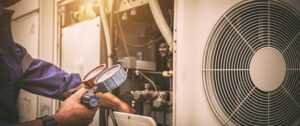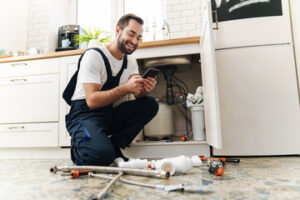Many factors influence Portable Restroom Trailer Rental cost. These include delivery charges, location, and the number of units rented. It is also important to consider maintenance and sanitation costs.

Regular cleaning and sanitizing are crucial to maintaining a healthy environment. It is also important to notify staff when supplies run low or an issue arises, like clogged toilets or light bulbs going out.
Portable restroom trailer rentals offer an attractive alternative to standard porta potties, with upscale interiors and premium fixtures that elevate your event. They’re ideal for events where comfort and convenience are important, such as weddings or festivals. They also complement venues that prioritize aesthetics, such as vineyards or luxury event spaces.
In addition to ensuring that guests have access to sanitary facilities, you’ll want to ensure your rental offers plenty of room for privacy. You can achieve this by renting restroom trailers with separate men’s and women’s facilities. A COMMERCIAL RESTROOM TRAILER from CALLAHEAD includes two fully enclosed private bathroom stalls for ladies and one for men, along with flushing urinals and dividers. It also features a full vanity area with porcelain sink basins and a filled antibacterial soap dispenser. Its climate control system helps to keep the temperature comfortable and the space smelling fresh.
If you’re planning a winter event, it’s important to consider the weather conditions. Many portable toilet companies offer restrooms that come equipped with heating systems so that guests stay warm and comfortable. This feature is especially useful for outdoor events in areas where temperatures can drop significantly. In addition, some trailers have large windows that let in natural light and provide a more spacious feel.
The price of a Portable Restroom Trailer Rental can vary depending on several factors, including size and luxury level. Some vendors offer both daily and flat rates. These rates are great for short-term rentals like a one-day event or weekend wedding. However, it’s important to make sure you understand all of the costs associated with your rental before booking it.
Choosing a Portable Restroom Trailer Rental can help you avoid high costs associated with regular porta potties. It can also save you money on cleaning and servicing fees. This way, you can focus on other aspects of your event, such as food, drinks, and entertainment. In addition, a restroom trailer is a safer alternative to traditional porta potties because they can withstand the elements and are able to accommodate people with physical disabilities or impairments.
Clean
One of the main reasons that people rent a restroom trailer is to have clean facilities. They don’t want to walk into a smoky blue box with unpleasant odors or a messy interior. They want a clean, spacious bathroom trailer that is modern and comfortable. The good news is that it’s easy to keep your portable restroom clean. Just use odor prevention products and air freshening supplies in the bathroom and throughout the entire facility.
Odor prevention products eliminate musty odors and keep the bathrooms smelling clean throughout a multi-day event. Air freshening products mask any residual odor and provide a clean, pleasant scent for your guests. This prevents your guests from walking into a restroom and being turned off by the odor or the smell of other people’s urine.
If you are planning on renting restroom trailers for a long-term project, it’s important to do your research before choosing a company. Check out the customer reviews and ratings, and compare quotes from different companies to find the best value. Also, check the company’s licensing and certification to ensure that they are following health and safety standards. Also, inquire about post-rental support to make sure that they offer a high level of service after the rental is complete.
Another way to keep your restrooms clean is to place them away from sunlight. The sun can intensify the odors of the toilet and the other stalls. It’s also important to make sure that the doors are open when the restroom is not in use, so that it can ventilate.
The cleanliness of a restroom trailer can affect employee morale and productivity. If your employees are forced to use a dirty portable restroom, they may lose valuable work time while searching for a clean bathroom. In addition, the smell of a dirty restroom can cause workers to become sick. By providing a clean, modern portable restroom trailer, you can keep your employees happy and healthy.
Luxury restroom trailers offer a step above the standard port-a-potty and are an excellent choice for any special event or wedding. They are designed to be more luxurious and spacious than standard restrooms, making them the perfect option for large events. These units can include amenities like climate control, flushing toilets, and even a sit-down area. This will ensure that your guests and attendees have a positive experience and will be more likely to return for future events.
Convenient
When your guests are attending a special event, they don’t want to be distracted by bathroom-related concerns. They want to enjoy the event and spend time with their loved ones. When you rent a restroom trailer, you can rest assured that your attendees will have easy access to clean bathrooms. It’s an affordable and convenient option for all kinds of events, including outdoor weddings. In addition to toilets, restroom trailers also come with other conveniences, such as Corian countertops and built in sound systems. Some companies even offer services such as regular cleaning during rentals, which is crucial to maintaining hygiene. They can even provide wheelchair accessibility ramps for people with disabilities.
Many things can influence the cost of a portable restroom trailer rental, such as the size of the unit, location fees, and usage. However, renting for a longer duration will generally result in lower costs due to discounts offered by vendors for long term rentals. In this blog post, we will explore the various factors that can affect restroom trailer rental costs and how you can maximize your budget.
If you’re planning an event or construction project, it’s essential to have a reliable source of bathroom facilities. Providing your guests and employees with comfortable, clean, and spacious portable restrooms will make the experience more enjoyable for everyone.
A portable restroom trailer rental is an excellent choice for event organizers, as it provides more space and amenities than standard porta potties. This allows you to accommodate more people while keeping your event running smoothly. The restrooms can also be customized with different themes to enhance the event’s atmosphere and increase brand awareness.
Portable restroom trailers are available in a wide range of sizes and features, from basic models to luxury multi-restroom units. They also include a variety of amenities, such as odor control, climate control, and hand washing sinks. The temperature-controlled restrooms are perfect for use during any weather condition, and the hand-washing stations ensure that your guests are clean and hygienic.
The restrooms are easily transportable, and the service provider will deliver them to your site on a truck with a mechanical lift. This ensures that they are safe and secure for your event or construction project. Once you’ve selected the ideal model for your needs, you can expect a quick delivery and pickup process.
Flexible
Whether it’s for an elegant wedding, high-stress movie shoot or a sports event with crowds that exceed local restroom capacity, portable toilet rental can provide the amenities necessary to elevate the guest experience. Guests can rely on the convenience of having a variety of toilets to choose from as well as additional features like handwashing stations, sinks with hot and cold water, mirrors, and paper towel dispensers.
Portable restroom trailers are available in a number of sizes to accommodate varying event and site needs. For example, a two-station Vegas model is ideal for construction sites, while larger luxury restroom trailers that feature distinct men’s and women’s stalls, air conditioning, and LED lights are designed to accommodate a wide range of special events. ADA-compliant portable restrooms are also available to accommodate visitors with disabilities and other mobility issues.
Costs for portable toilet rentals vary based on size, amenities, and duration of use. However, for most rentals, the price is significantly less than purchasing up-front. Rentals can be delivered and serviced on-site, or shipped pre-serviced and ready to set up at the event location. Many rental companies offer flexible terms, such as weekly or monthly rentals with the option to extend for a longer period.
From the concrete jungle to the serene landscapes of Long Island, there’s no shortage of opportunities for businesses and individuals to rent portable restrooms. Whether it’s restaurant owners seeking to improve customer satisfaction, event organizers orchestrating major public gatherings, or disaster relief crews looking for quick access to sanitation and clean water, portable restrooms are an essential part of keeping running 24/7. Portable restroom trailers are a convenient and comfortable alternative to standard porta potties, and can be an effective way to increase the comfort level at any location. Whether you’re in need of a few basic porta potties or a more sophisticated restroom trailer, Rumpke has the portable toilet solution for you. Contact us today to learn more about our pricing options and availability. We look forward to providing you with a great portable toilet rental experience!






